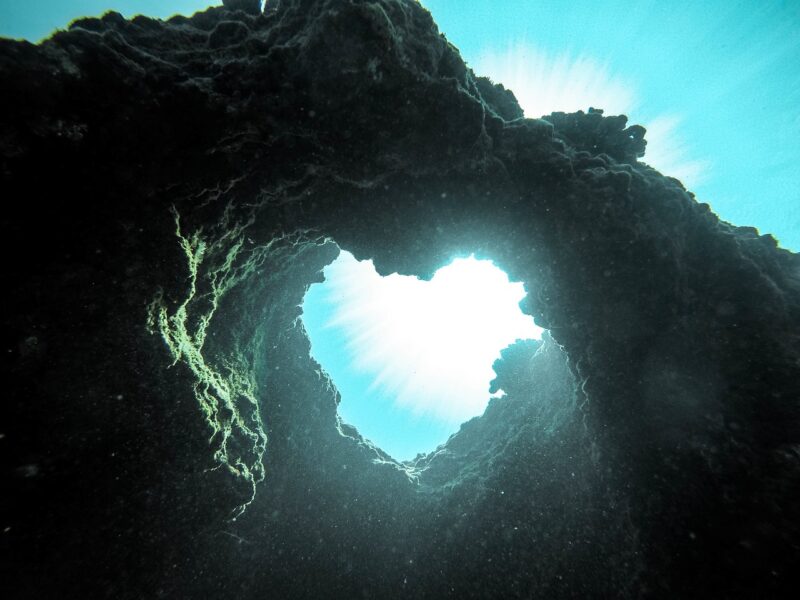Unexplained Sounds from the Deep Ocean That Defy Scientific Understanding
November 12, 2024

The ocean covers over 70% of our planet’s surface, yet much of it remains a mystery. Amongst its many enigmas are the strange and unexplained sounds that emanate from the depths of the sea. These auditory phenomena have puzzled scientists, researchers, and oceanographers for decades, inspiring a wealth of speculation and intrigue. In this article, we will explore some of the most captivating unknown sounds from the deep ocean, the theories surrounding them, and why they remain one of the greatest mysteries of our time.
1. The Mystery of the Bloop
In 1997, the National Oceanic and Atmospheric Administration (NOAA) recorded a powerful underwater sound dubbed the “Bloop.” This sound was so loud that it was detected over 5,000 kilometers away by sensors designed to monitor underwater nuclear tests.
The sound has been likened to a giant creature or an ice quake, but its true origin remains unverified. Scientists hypothesize that the Bloop could have originated from massive icebergs breaking apart in icy regions of Antarctica, but this remains just one theory.
2. Upsweep: A Persistent Puzzle
Discovered in the late 1990s, the “Upsweep” sound is characterized by a series of long, low-frequency sounds that resemble a moaning or sweeping echo. These sounds occur seasonally and appear to be more frequent in the Southern Pacific Ocean.
Scientists believe that the Upsweep could be caused by natural phenomena, possibly related to the geological activity in the region, but its consistent and rhythmic pattern is still a topic of debate.
Some researchers speculate the possibility of it being related to marine life, perhaps signaling a mating call or territorial display from unknown species of marine animals.
The Whistle: An Unsolved Enigma
In late 1990s, the Whistle sound was identified, which has a unique rising frequency that has baffled those who study underwater acoustics. Unlike other sounds that have been attributed to geological activity or ice movements, the Whistle appears to rise and fall in pitch.
Some scientists speculate that it could be a result of underwater volcanic activity or even the movements of deep-sea animals. The true source has yet to be conclusively determined, leading many to question if it is a sound produced by nature or a signal from an unknown entity.
Num: Mysterious Underwater Pulse
Named after the Greek word for mystery, “Num” is a sound detected in 1994 that features a long and low-frequency pulse. The sound exhibits a distinctive pattern that some researchers have compared to a heartbeat.
The source of Num remains elusive. Some hypotheses suggest it could be geological or possibly linked to volcanic activity, while others ponder the potential of unclassified marine life emitting such frequencies.
The Jingle: A Head Scratcher
With a sound reminiscent of metal jingling, the Jingle is another recorded ocean sound that has puzzled scientists since its detection. While it initially seemed harmless, this sound raises questions about its origins, leading to hypotheses ranging from natural underwater vibrations to anomalies created by human activities.
Possible Explanations for These Sounds
The deep ocean is still largely unexplored, and many of these sounds could indeed stem from natural geological processes or undiscovered marine life. Here are some possible explanations:
- Marine Animals: Various species of marine life are capable of producing a range of sounds, from the songs of whales to the clicks of dolphins. It’s plausible that some of the unexplained sounds originate from creatures not yet recognized or studied by scientists.
- Ice Calving: The breaking and collapse of icebergs and glaciers can generate low-frequency sounds that travel far through water, which may account for some of the noises attributed to mysterious phenomena.
- Geological Activity: Earthquakes, volcanic activity, and even underwater landslides can create significant underwater soundscapes, potentially contributing to the mysterious noises detected by scientists.
- Human Activities: Shipping, drilling, and underwater construction might also produce recognizable sounds that can be misattributed to natural phenomena.
The Importance of Understanding Underwater Sounds
Studying these underwater sounds is crucial not just for scientific curiosity but also for biodiversity and conservation efforts. Understanding the acoustic environment of oceans allows researchers to monitor the health of underwater ecosystems and the impact of human activities on marine life.
These mysterious sounds remind us of how little we know about the vast ocean depths. With advances in underwater acoustics and increased interest in marine biology, future research may finally unveil the origins of these enigmatic noises and provide insight into the rich and complex world lurking below the surface.
Conclusion: The Oceanic Enigma
The unexplained sounds from the deep ocean continue to captivate and mystify scientists and enthusiasts alike. From the eerie Bloop to the melodious Upsweep, these phenomena pose more questions than answers, challenging our understanding of the marine world. As we further explore the depths of the ocean, we remain hopeful that these sounds will eventually expose the secrets of a hidden, dynamic realm brimming with life, and perhaps even reveal creatures we have yet to discover.
Despite the mysteries shrouding these underwater noises, one thing remains clear: the ocean is a vast and uncharted territory, waiting to share its many secrets.








